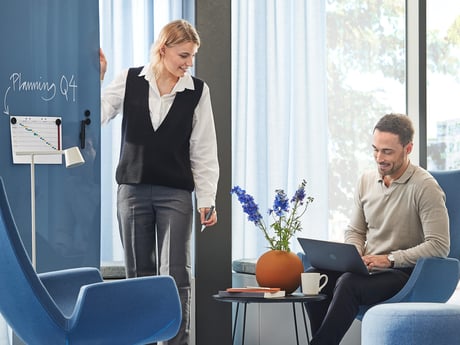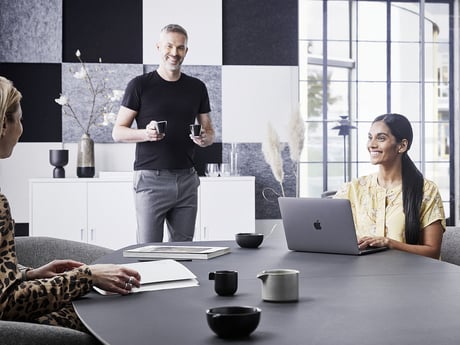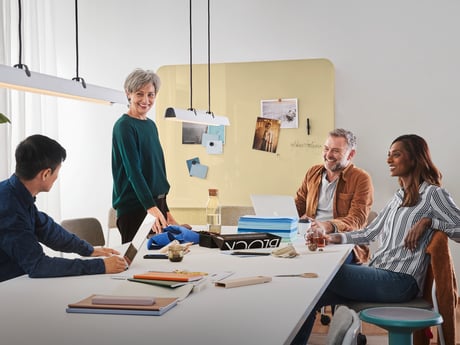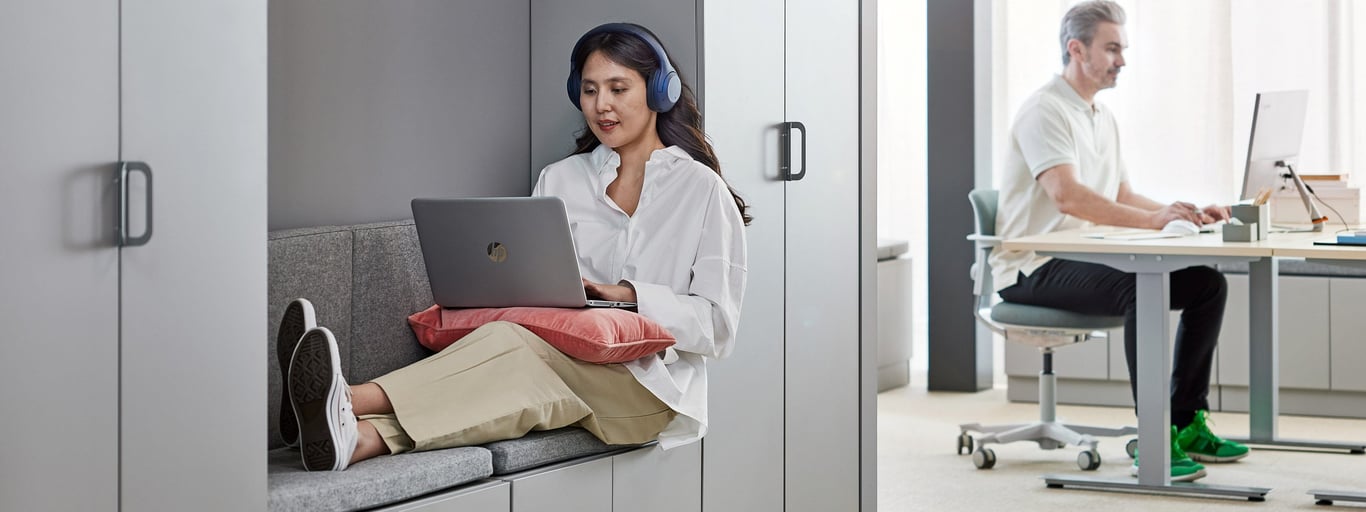
Self-leadership
As a family-owned company operating in 21 markets, we are constantly developing our own leadership practices. With over 50 years of experience working alongside entrepreneurs and business leaders, we can support you not only with workplace design but also by sharing insights into leadership, including self-leadership
What is self-leadership?
Self-leadership is a leadership method where the employee takes responsibility for their own work, decisions and achievements. This means that they should independently set their work goals, prioritize their tasks, take initiative, etc. Self-leadership is also about being aware of your strengths and weaknesses, and constantly striving to develop and improve.
When is self-leadership appropriate?
Self-leadership is not for everyone, but is a way of working that requires commitment from both the employee and their manager for it to work. As an employee, you must have a strong sense of drive and responsibility, as you control yourself and your tasks, unlike more guided leadership. There are both exercises and training to learn more about self-leadership and how to work with it as a leadership method.
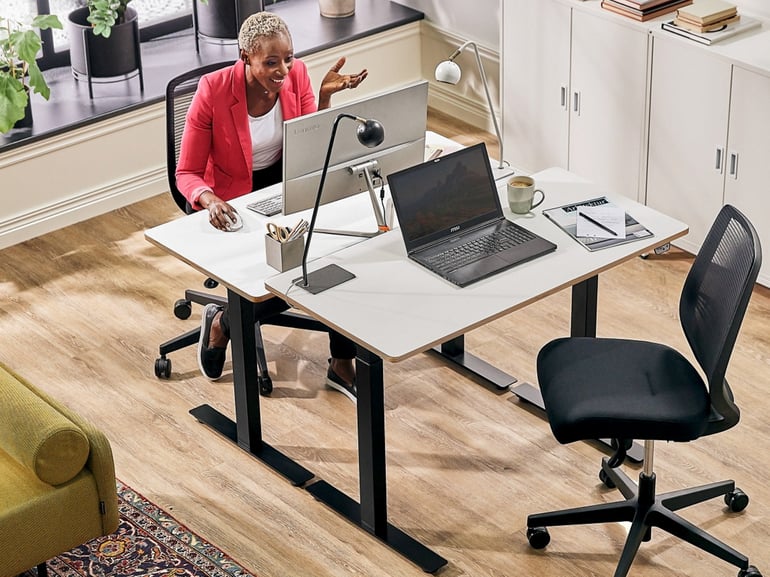
From being a leader to a self-leader
As a manager of someone who works under self-management, you still need to be able to be involved in the employee's work but have confidence that the work will be done. It is important to be able to take a step back and encourage the employee's own ability to take responsibility for their work. Often, more of an emotional support from your side may be required. It is also important that there is continuous feedback, follow-up and evaluation of the employee's work.
Learn more about how to give and receive constructive criticism
Advantages and disadvantages
As with all leadership theories, there are both positive and negative views about self-leadership. It is not suitable for all employees or in all workplaces.
There are several benefits of self-leadership, both at the individual and organizational level:
- Increased responsibility and initiative: Self-leadership means that people take responsibility for their own tasks and goals. This leads to increased responsibility, initiative and commitment, among other things.
- Better adaptation in a changing work environment: Self-directed people often have the ability to adapt to changes and developments in the work environment. This makes them more flexible, learning and innovative, which is critical for success in a dynamic and competitive work environment.
- Improved stress management: by proactively working with self-leadership, people can manage their stress better and thus have a healthy work-life balance.
- Strengthened teamwork and efficiency: self-leaders are often good at communicating and collaborating, which leads to improved team dynamics and increased efficiency in the workplace.
Despite many advantages, there can also be disadvantages to self-leadership:
- The risk of overload and burnout: if the person takes on too much responsibility and does not set limits on their workload and responsibilities, it can lead to excessive workload. Lack of feedback and evaluation can also contribute to difficulties in setting boundaries for work.
- Difficulty delegating and accepting support: self-directed people may have difficulty delegating responsibility and accepting help or support from both colleagues and managers.
- Increased stress and pressure from employers: with greater freedom and responsibility, people working under self-management may experience increased pressure to perform and deliver results as they are seen as a person with extra high work capacity.
- Difficulties with working from home: for self-directed people who work a lot from home, it is easy for the line between work and leisure to blur as responsibility for workload and schedule is set by oneself.
Working in a VUCA world as a self-leader
A concept that has come to be associated with leadership and often in connection with self-leadership is VUCA. It is an acronym that was originally used by the US military to describe how complex, turbulent and rapidly changing today's world is. In recent years, VUCA has also become relevant in leadership because many companies are constantly faced with challenges, a fast pace and there are continuously new demands on both the organization and employees.
Self-leadership is particularly important in a VUCA world where success requires adaptive ability, determination and personal responsibility. It is then very advantageous for a workplace to have employees who work goal-driven, are up-to-date on the world situation, take on rapid technological changes, etc.
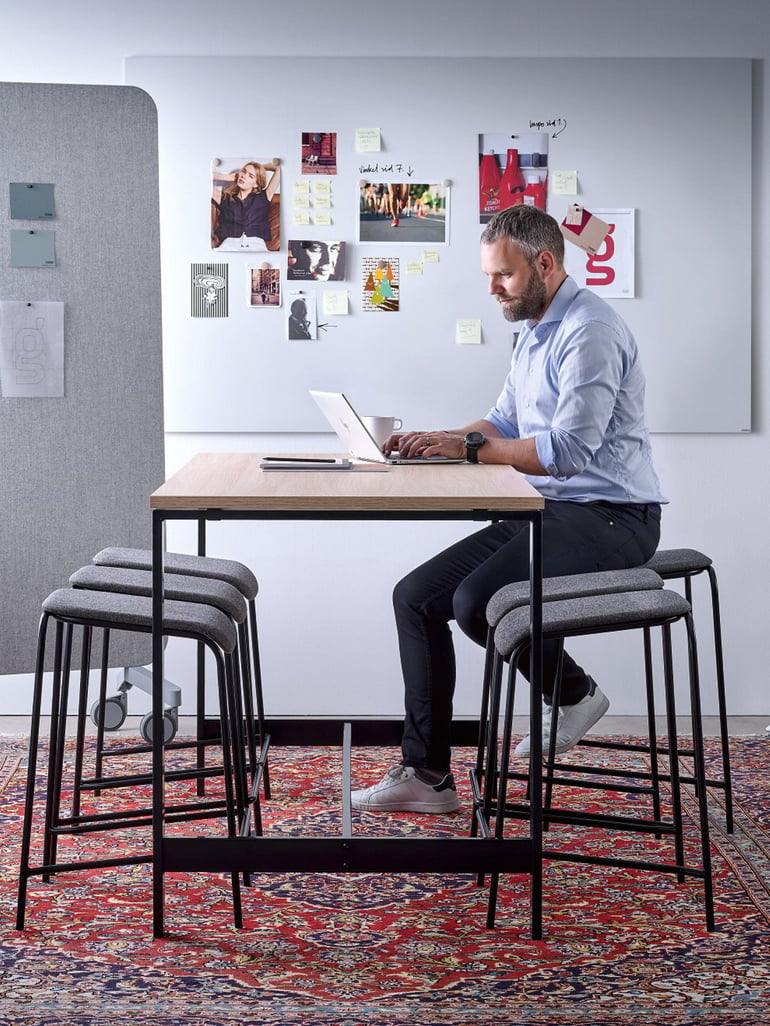
Summary
Self-leadership has become an increasingly popular leadership method, especially during the pandemic when working from home increased and employees had to take greater responsibility for their own work. Self-leadership means that the employee sets their own goals, works independently and prioritizes their tasks. This way of working is not suitable for everyone and requires commitment from both the employee and the manager. The advantages include increased responsibility and adaptability. The disadvantages can be overload and increased stress.
Learn more about leadership
FAQ
- Self-leadership is a method where employees take responsibility for their own work, decisions, and performance, setting their own goals and prioritising tasks independently.
- Benefits include increased responsibility and initiative, better adaptation to changing environments, improved stress management, and enhanced teamwork and efficiency.
- Managers can support self-leaders by providing emotional support, continuous feedback, follow-up, and evaluation, while trusting employees to take responsibility for their work.
- VUCA stands for Volatility, Uncertainty, Complexity, and Ambiguity. It describes the rapidly changing world we live in today, making self-leadership valuable as it requires adaptability, determination, and personal responsibility.
